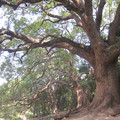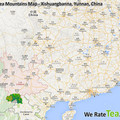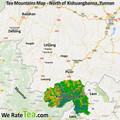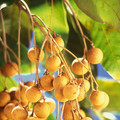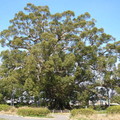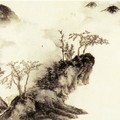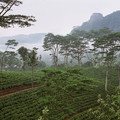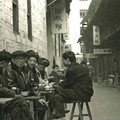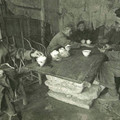Jujube Fragrance in Pu-erh
Photos Tags: Pu-erh
- Discussion: 0 comments
- Write a comment
Teas - Pu-erh
2005 Xiaguan Jia Ji Raw Tuocha
 0 reviews
0 reviewsClassic "Jia Ji" recipe! This tuocha is pressed in 2005, composed of 1-2...
2014 Laos Ban Komaen (Blue) Gu Shu Raw
 0 reviews
0 reviewsPhôngsali is a province of Laos, bordering Yiwu, Yunnan. It is located high in the...
2005 (2015) Chawangpu Bulang Shan Old
 0 reviews
0 reviewsThis tea was found in friend´s warehouse in Menghai where was stored since 2005. Clean...
NaKa 2013 - blind tasting set 3
 1 review
1 reviewthis tea is sold only as a sample, each order is limited to have only 2 samples of this...
2009 Ripe Puerh Tea Paste "Cha Gao" 25g
 0 reviews
0 reviewsAlmost on the verge of disappearing, Pu-erh tea paste used to be the special tribute to...
2006 Longyu Brand Bulangshan Jin Cha Raw
 1 review
1 reviewRaw Jin Cha is especially for Tibetan market, used to be mixed with milk, it is very...
Quotes - Pu-erh
„After picking appropriate tender leaves, the first step in making raw or ripened pu'er is an optional wilting/withering stage, thus converting the leaf to maocha.“
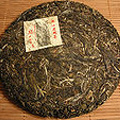
Quotes Tags: Pu-erh, Sheng - Raw Puerh, Shu - Ripe Puerh, Maocha
Video - Pu-erh
Tea by region
Remember what tea did you drink year ago?
Create your own collection of favorite teas and keep the track what you have drunk.
We will help you with tea selection.
Do you like quality loose tea?
We will help you to find the right one for you. Be inspired by tea ratings of other tea lovers. Rating stars could help you.


Latest posts
07.06.2025 @ 07:48:53 - lalo233:
The unforgiving landscapes of Arrakis in Dune: Awakening demand a mastery of combat....
07.06.2025 @ 07:48:50 - lalo233:
The unforgiving landscapes of Arrakis in Dune: Awakening demand a mastery of combat....
01.01.2016 @ 18:14:35 - Eternal Spring:
WeRateTea.com wish you all the best for 2016!...
07.12.2015 @ 09:07:02 - sypalino:
I decided to taste this tea 2 weeks after delivery. The cake is lightly pressed, so...
09.11.2015 @ 21:58:19 - Eternal Spring:
Comparison of 2013 Bada Pu-erh.sk with <a...
09.11.2015 @ 09:34:07 - Eternal Spring:
Lao Yu 2013 is now about 2,5 years old tea and out of this 1,5 year stored in Europe....
09.11.2015 @ 09:33:11 - Eternal Spring:
Comparison of all three Lao Yu is now done :)
15.10.2015 @ 11:06:37 - Eternal Spring:
2015 Chawangpu Collection – I can only tell, that all teas are very good :)
09.10.2015 @ 10:31:19 - Eternal Spring:
It was quite long and difficult tasting to make a decision… There is still quite...
24.01.2015 @ 16:55:57 - Eternal Spring:
WeRateTea.com wish you all the best for 2015!...
Review your cup of tea.
Review the tea you are drinking and help other tea lovers to find the right cup of tea.



Theme
Quotes
„Mr. Gao showed us how to identify gu shu (ancient tree) tea leaves by looking at their texture, rubbing them between your fingers, and eating them raw. Old tea trees produce thicker, more leathery leaves that don’t easily come apart when you rub them. And gu shu buds should be white & shiny. When you chew them, the flavor is very bitter but there is also a strong sweet fragrance, and the juice is relatively easy to swallow. Tai di cha (terrace plantation tea) is also bitter but with a strong, lasting astringency on the sides & front of the tongue, and the juice is harder to swallow.“



 Shops
Shops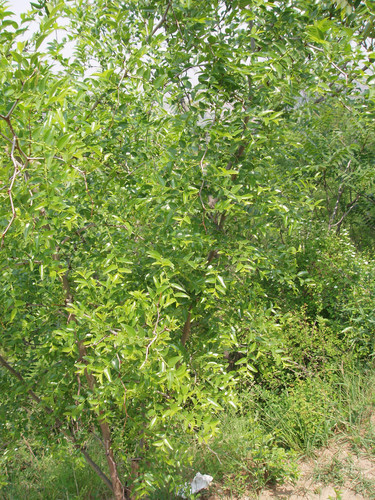
 Share on Facebook
Share on Facebook






